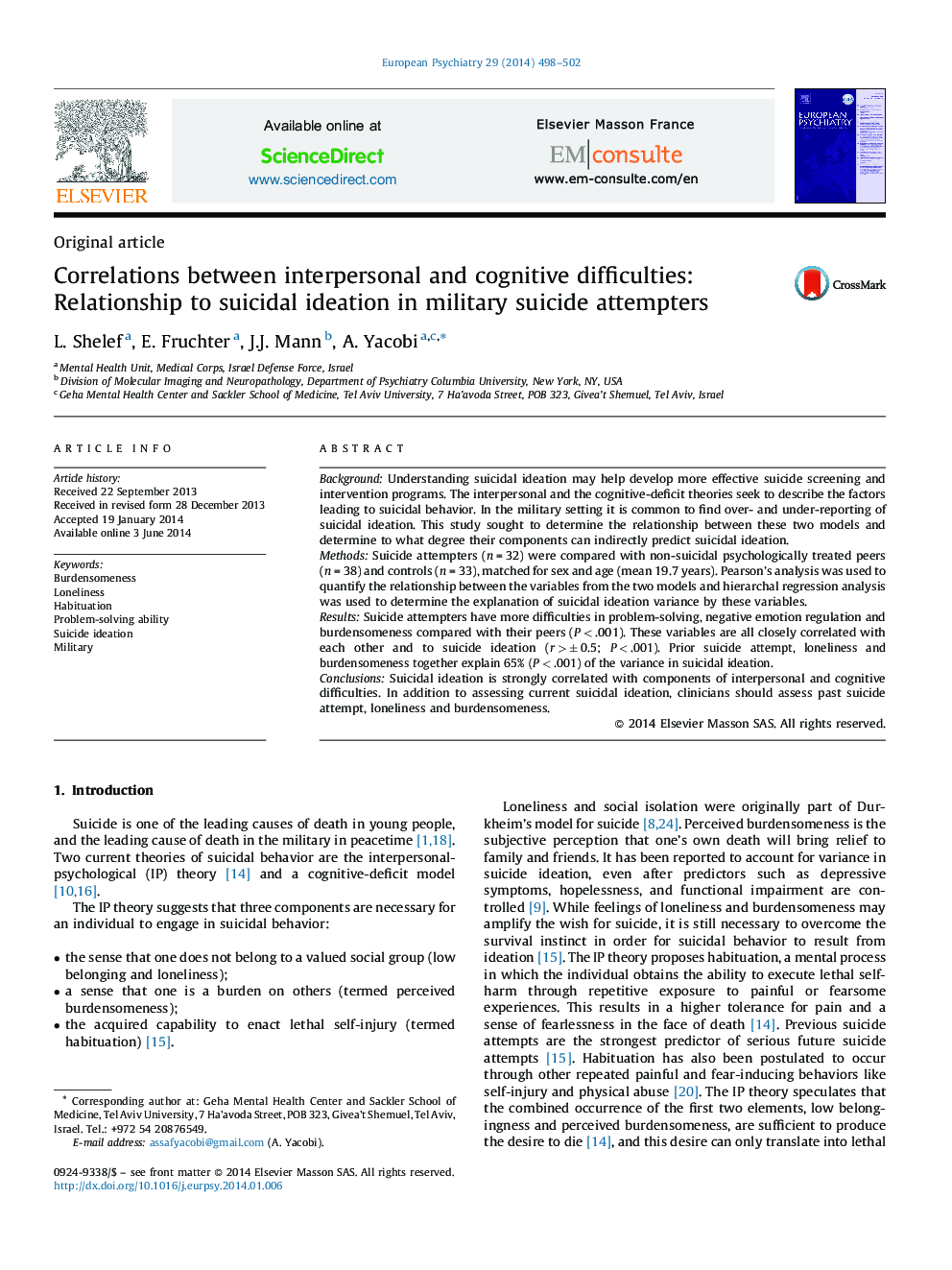| Article ID | Journal | Published Year | Pages | File Type |
|---|---|---|---|---|
| 4183743 | European Psychiatry | 2014 | 5 Pages |
BackgroundUnderstanding suicidal ideation may help develop more effective suicide screening and intervention programs. The interpersonal and the cognitive-deficit theories seek to describe the factors leading to suicidal behavior. In the military setting it is common to find over- and under-reporting of suicidal ideation. This study sought to determine the relationship between these two models and determine to what degree their components can indirectly predict suicidal ideation.MethodsSuicide attempters (n = 32) were compared with non-suicidal psychologically treated peers (n = 38) and controls (n = 33), matched for sex and age (mean 19.7 years). Pearson's analysis was used to quantify the relationship between the variables from the two models and hierarchal regression analysis was used to determine the explanation of suicidal ideation variance by these variables.ResultsSuicide attempters have more difficulties in problem-solving, negative emotion regulation and burdensomeness compared with their peers (P < .001). These variables are all closely correlated with each other and to suicide ideation (r > ± 0.5; P < .001). Prior suicide attempt, loneliness and burdensomeness together explain 65% (P < .001) of the variance in suicidal ideation.ConclusionsSuicidal ideation is strongly correlated with components of interpersonal and cognitive difficulties. In addition to assessing current suicidal ideation, clinicians should assess past suicide attempt, loneliness and burdensomeness.
